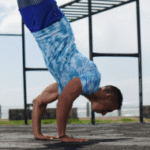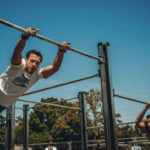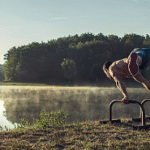Hot and Cold Therapy: The Ultimate Wellness Ritual
Okay, here is a detailed description of **”Hot and Cold Therapy: The Ultimate Wellness Ritual,”** framed for an audience in the **USA**.
**Introduction: The Rise of the Thermal Ritual**
Across the USA, intentional exposure to significant heat and cold is rapidly evolving from a niche practice for athletes into a mainstream **wellness ritual**. Often involving sequences like visiting a sauna followed by a cold plunge or shower, this practice, rooted in ancient traditions and increasingly backed by modern science, is embraced for its potential to enhance physical recovery, sharpen mental clarity, build resilience, and promote overall well-being. This guide explores why hot and cold therapy is considered such a powerful ritual, its components, benefits, and how to practice it safely and effectively in the US.
**Why an “Ultimate Wellness Ritual”? The Principles at Play**
The power of this ritual lies in its ability to strategically stress and stimulate the body’s adaptive systems:
- **Hormesis:** This is a key biological principle where exposure to a mild, temporary stressor triggers a beneficial adaptive response, making the body stronger and more resilient over time. Both deliberate heat exposure (like in a sauna) and cold exposure (like a cold plunge) are considered hormetic stressors. Regularly engaging in this controlled stress can enhance cellular repair processes and improve stress tolerance.
- **Physiological Reset:** The dramatic shifts in temperature provoke strong physiological responses:
* **Circulation:** Heat causes vasodilation (widening blood vessels), increasing blood flow; cold causes vasoconstriction (narrowing blood vessels), redirecting blood flow. Alternating them creates a dynamic circulatory effect.
* **Nervous System:** The shock of cold, in particular, activates the sympathetic nervous system (alertness, norepinephrine release), while the relaxation from heat and the recovery phase afterwards can stimulate the parasympathetic nervous system (“rest and digest”). Regular practice may help regulate the autonomic nervous system.
* **Hormonal Shifts:** Exposure can trigger the release of endorphins (mood elevation, pain relief), norepinephrine (focus, alertness), and potentially influence stress hormones like cortisol over time.
- **Mind-Body Connection:** The ritual demands presence. Managing the intense physical sensations, especially the cold, requires conscious breathing and mental focus. This act of willingly embracing discomfort can significantly build mental resilience, discipline, and a stronger connection between mind and body awareness.
**The Ritual Components:**
A typical hot and cold therapy ritual involves distinct phases:
**Part 1: The Heat Experience (Thermotherapy)**
* **Purpose:** To heat the body, relax muscles, increase circulation to the skin, induce sweating, and promote mental relaxation.
* **Common Methods in the USA:**
* **Traditional Sauna (Finnish Style):** High dry heat (170-195°F / 75-90°C), low humidity. Option to create steam (*löyly*) by adding water to rocks. Widely available in gyms and spas; popular for home installation.
* **Infrared Sauna:** Uses infrared light to heat the body directly at lower air temperatures (120-150°F / 50-65°C). Popular for home use and wellness studios, offers deep penetrating heat.
* **Steam Room:** Lower temperature (110-120°F / 43-49°C) but very high humidity (~100%). Good for respiratory comfort and skin hydration. Common in gyms/spas.
* **Hot Tub / Warm Bath:** Accessible home option, though usually not reaching sauna-level temperatures.
* **Duration:** Typically 10-20 minutes per heat cycle, depending on temperature and tolerance.
* **Ritual Focus:** Letting go of tension, focusing on the warmth, mindful breathing, detoxification through sweat (perceived or actual).
**Part 2: The Cold Exposure (Cryotherapy)**
* **Purpose:** To rapidly cool the body, constrict blood vessels, reduce inflammation and soreness, stimulate the nervous system, and build mental fortitude.
* **Common Methods in the USA:**
* **Cold Plunge / Ice Bath:** Dedicated tubs (increasingly available in gyms, recovery centers, and for home purchase) filled with cold water (typically 40-59°F / 4-15°C). Provides full immersion.
* **Cold Showers:** Highly accessible home option. Turn the shower as cold as possible for the final minute or two.
* **Natural Cold Water:** Swimming in cold lakes or oceans (requires extreme caution, safety measures, and acclimatization; seasonal/regional in the US).
* **Duration:** Much shorter than the heat phase, typically **30 seconds to 3-5 minutes**, depending heavily on temperature and individual tolerance. Beginners should start very short (e.g., 30-60 seconds).
* **Ritual Focus:** Controlled breathing to manage the initial shock, embracing the discomfort calmly, feeling invigorated and alert.
**Part 3: The Contrast (Alternation – Optional but Common)**
* **Method:** Intentionally cycling between the heat source and the cold source multiple times within one session. Common protocols include 3-4 minutes of heat followed by 1 minute of cold, repeated 2-4 times.
* **Proposed Benefits:** Theorized to create a “vascular pump” effect, potentially enhancing circulation and waste removal more than heat or cold alone. Offers a dynamic, stimulating experience.
* **Ritual Focus:** The deliberate transition, embracing both extremes sequentially, potentially building greater adaptability.
**Holistic Wellness Outcomes:**
Practicing hot and cold therapy as a regular ritual can contribute to:
* **Enhanced Stress Resilience:** Training the nervous system to handle the acute stress of temperature changes can improve resilience to everyday stressors.
* **Improved Physical Recovery:** Reduced muscle soreness (DOMS), potentially faster recovery from exercise due to reduced inflammation and circulatory effects.
* **Boosted Mood and Mental Clarity:** Release of norepinephrine, dopamine, and endorphins can lead to feelings of alertness, focus, and well-being.
* **Improved Circulation:** The vasodilation/vasoconstriction cycles act as a workout for blood vessels.
* **Potential Immune System Support:** Some evidence suggests hormetic stress responses might positively influence immune function, though more research is needed.
* **Better Sleep Quality:** Particularly sauna use in the evening, or the body temperature drop after a cold plunge, can promote better sleep for some.
* **Increased Discipline and Mindfulness:** The practice requires commitment and conscious attention to breath and body sensations.
**Creating Your Hot/Cold Ritual in the USA:**
* **Consistency is Key:** Aim for regular sessions (e.g., 1-3 times per week, or even daily cold showers) to allow your body to adapt and experience cumulative benefits.
* **Set an Intention:** Approach your sessions mindfully as a dedicated time for wellness, not just another task to rush through.
* **Control Your Environment:** Minimize distractions. If at home, dim lights or play calming music during/after. If at a public facility (common in the US), try to find quieter times or focus inward.
* **Listen to Your Body:** This is non-negotiable. Don’t push through pain or severe discomfort. Adjust temperatures and durations based on how you feel *that day*. Some days you’ll tolerate more than others.
* **Post-Ritual Integration:** Allow time to cool down or warm up gradually. Rehydrate thoroughly. Take a few minutes to rest quietly and notice how your body and mind feel after the session.
**Safety Protocols: The Foundation of the Ritual**
**Safety MUST be the top priority.**
* **Medical Consultation:** **Strongly recommended** to consult your doctor before starting regular hot/cold therapy, especially if you have:
* Any cardiovascular conditions (heart disease, high or low blood pressure, arrhythmias).
* Circulatory issues (like Raynaud’s disease).
* Diabetes (potential for impaired sensation or blood sugar effects).
* Are pregnant.
* Have other significant health concerns.
* **Hydration:** Drink plenty of water before, and especially after, heat exposure.
* **Gradual Adaptation:** Start with shorter durations and more moderate temperatures. Don’t immediately jump into a 195°F sauna or a 39°F cold plunge for extended periods.
* **Never Cold Plunge Alone:** Particularly when starting out or using very cold water. Have someone aware and nearby.
* **Avoid Alcohol/Drugs:** Never use hot/cold therapy under the influence.
* **Know Your Limits:** Exit immediately if you feel dizzy, lightheaded, nauseous, excessively uncomfortable, develop chest pain, or experience uncontrollable shivering or numbness.
**Conclusion:**
Hot and Cold Therapy, when practiced mindfully and consistently as a wellness ritual, offers a potent combination of physical and mental benefits that resonate well with current wellness trends in the USA. By leveraging the body’s adaptive response to controlled temperature stress (hormesis), this practice—whether involving saunas, steam rooms, hot tubs, cold plunges, or even simple contrast showers—can contribute to improved recovery, enhanced mood and alertness, greater stress resilience, and a stronger mind-body connection. However, its power demands respect. Prioritizing safety through gradual adaptation, careful listening to your body, adequate hydration, and seeking medical guidance when needed are essential to ensure this “ultimate wellness ritual” remains a beneficial and sustainable part of your health journey.

Hot and Cold Therapy: The Ultimate Wellness Ritual
Route
Calisthenics Gym Houston Functional Bodyweight Training
Secondary phone: (346) 483-3195
Email: info@calisthenicsclubhouston.com
URL: https://calisthenicsclubhouston.com/
Monday 6:00 AM - 7:00 PM Tuesday 6:00 AM - 7:00 PM Wednesday 6:00 AM - 7:00 PM Thursday 6:00 AM - 7:00 PM Friday 12:00 PM - 6:30 PM Saturday 9:45 AM - 12:00 PM Sunday 3:00 PM - 5:00 PM





